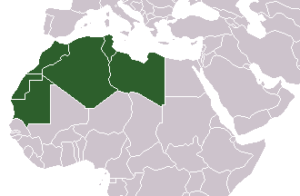
Researchers report* evidence of migrations from Europe to North Africa during the Neolithic period. The adoption of agriculture during the Neolithic represents a major development in human history. The process of agricultural adoption, known as the Neolithic transition, in North Africa remains largely uncharacterized, and it is unclear whether this process was driven by local populations adopting cultural and technological innovations or by the migration of people. Rosa Fregel and colleagues tested the possibilities by performing genome-wide analyses of human remains from Neolithic archaeological sites in Morocco. Individuals from the Early Neolithic site of Ifri n’Amr or Moussa, dated to approximately 5000 BCE, had similar ancestry to Later Stone Age individuals from North Africa. This ancestral signature is largely restricted to North Africa in present-day populations. By contrast, Late Neolithic individuals from the Kelif el Boroud site, dated to approximately 3000 BCE, shared only around half of their ancestry with Early Neolithic and Later Stone Age North Africans. The remaining half of their ancestry was shared with Early Neolithic individuals from southern Spain, suggesting that migration across the Strait of Gibraltar occurred between the Early and Late Neolithic. The results suggest that the early stages of the Neolithic transition in North Africa involved the adoption of technological innovations from neighboring areas by the local population, while subsequent migrations from Europe influenced further Neolithic developments, according to the authors.
Article Source: PNAS news release
*“Ancient genomes from North Africa evidence prehistoric migrations to the Maghreb from both the Levant and Europe,” by Rosa Fregel et al.
______________________________





